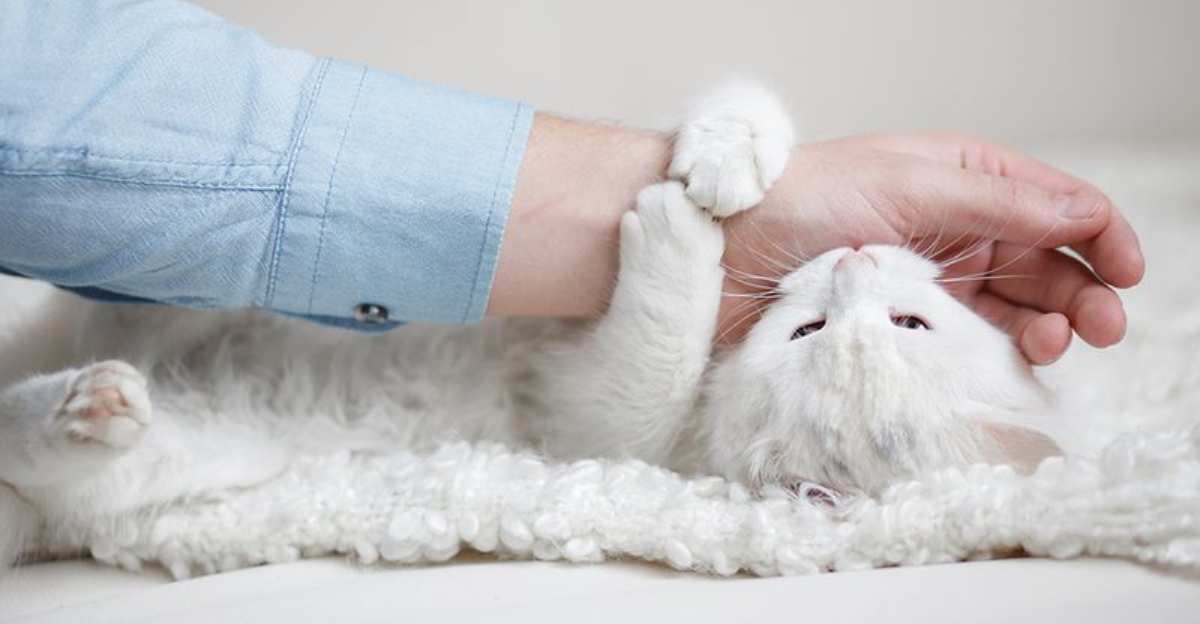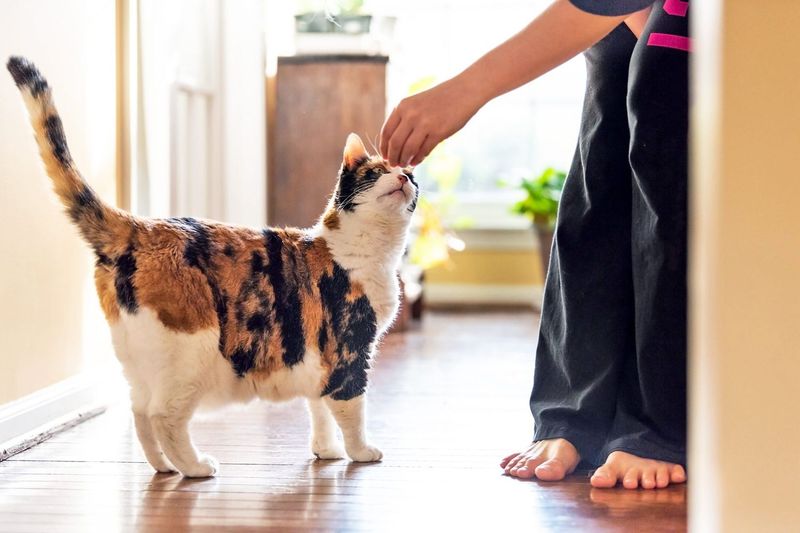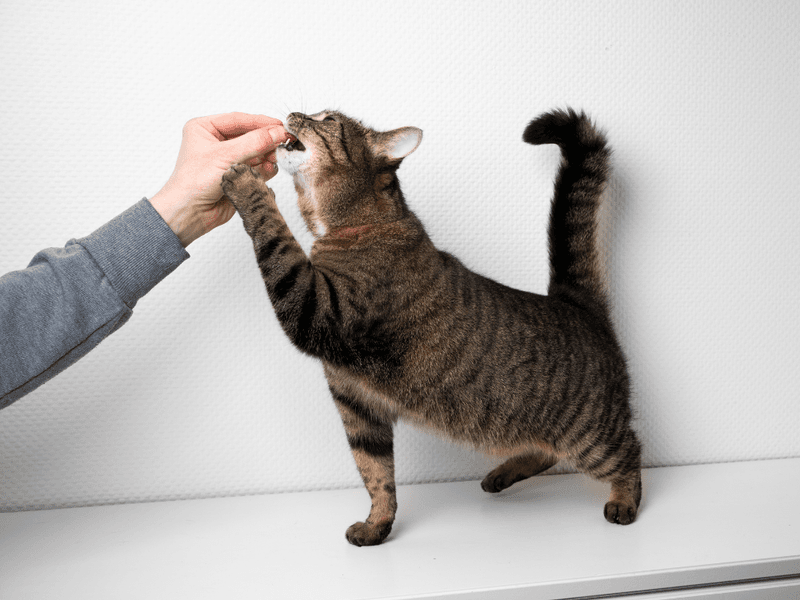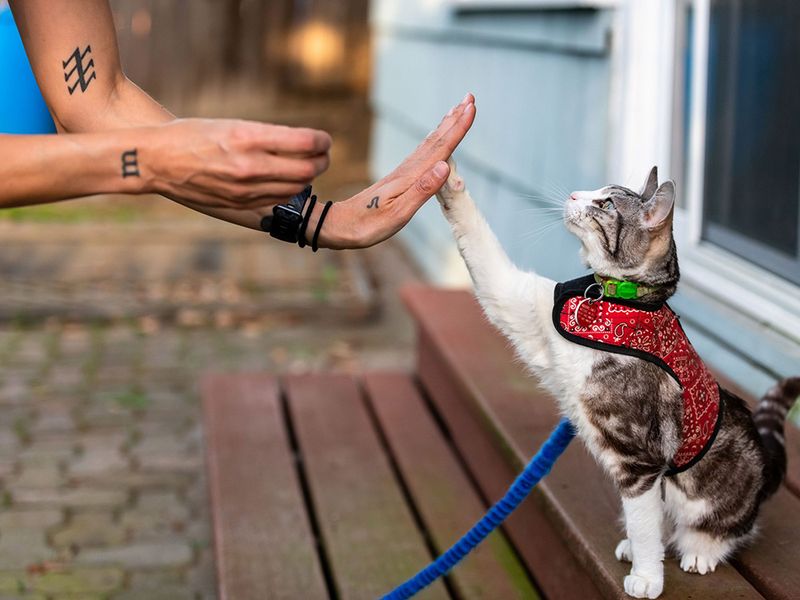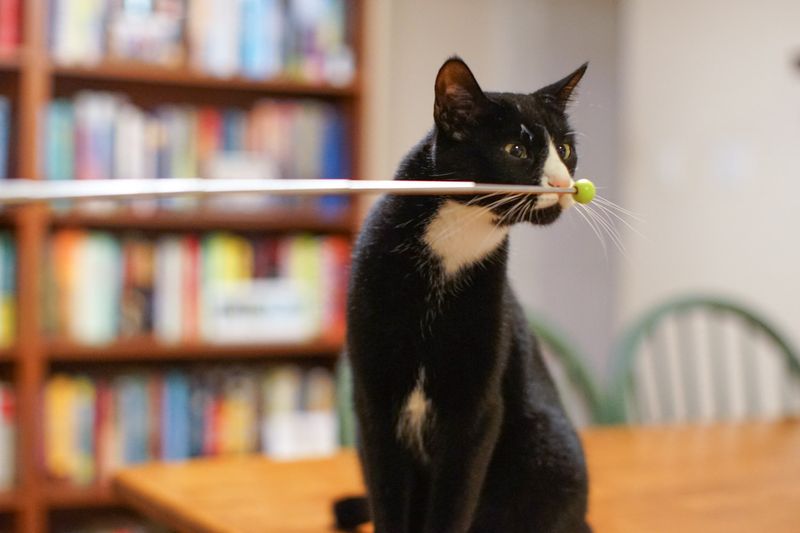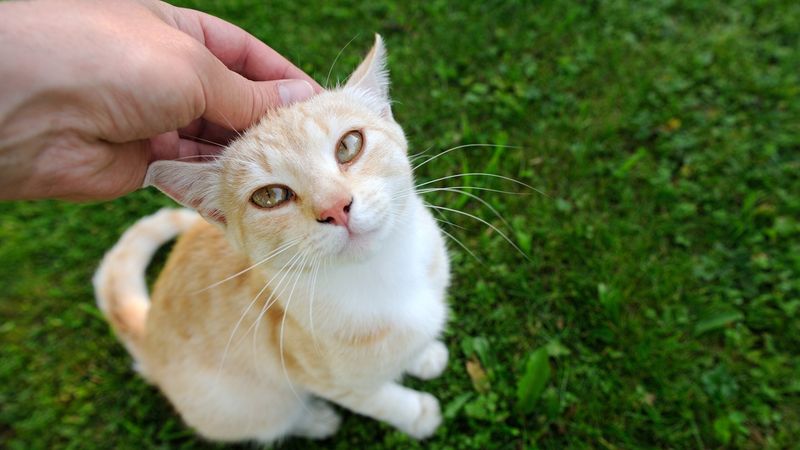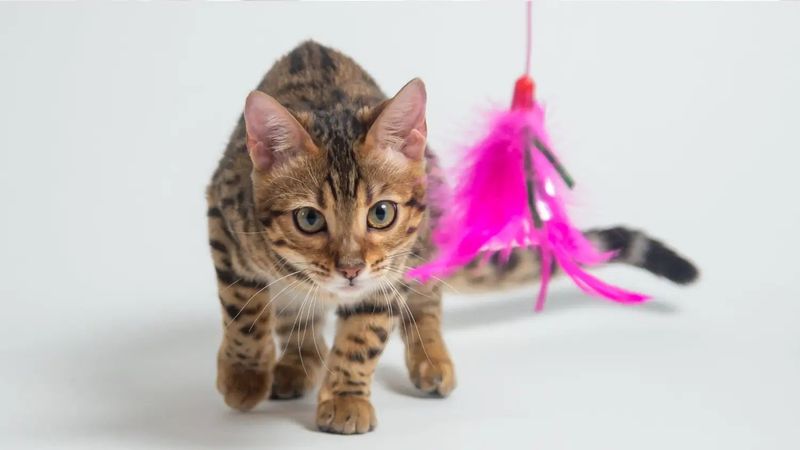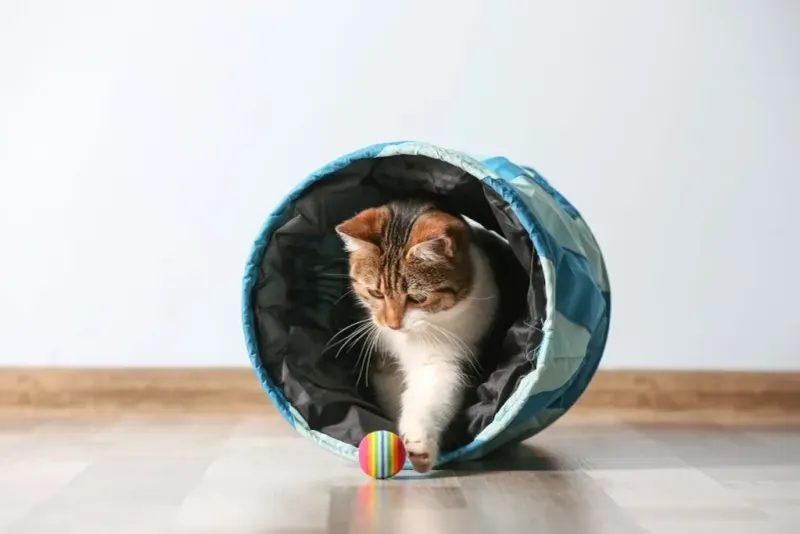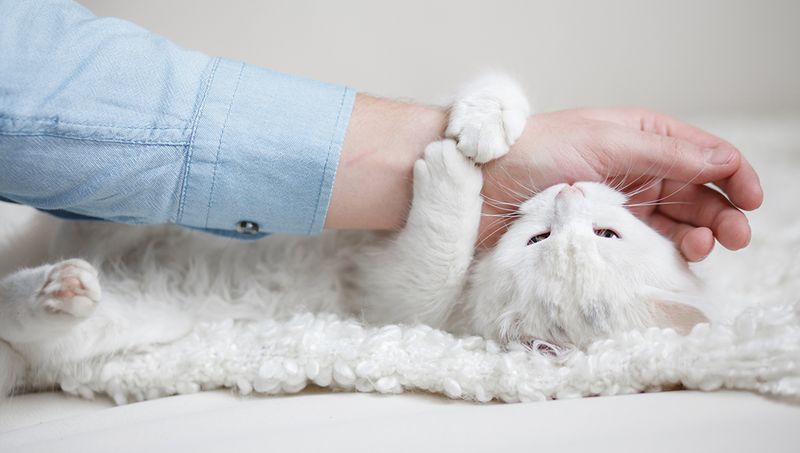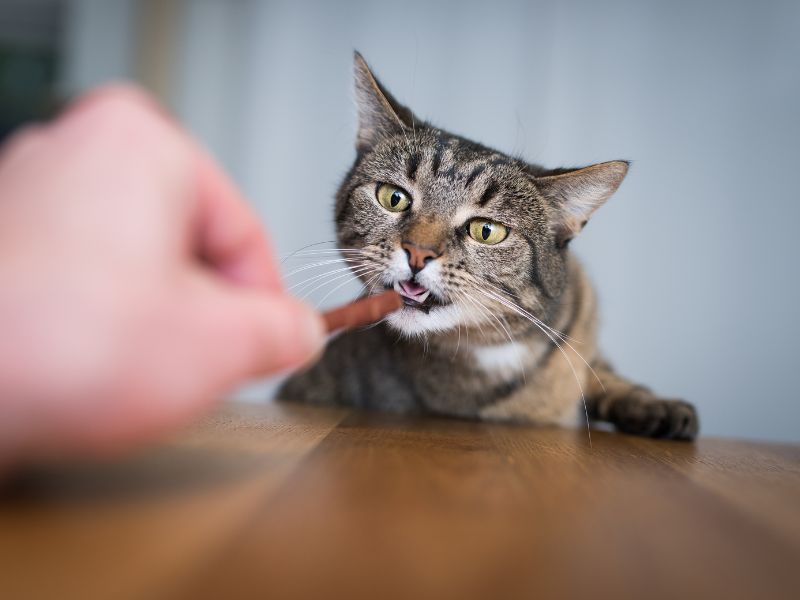📖 Table of Content:
- 1. Start with Simple Commands
- 2. Use High-Value Treats
- 3. Clicker Training Works Wonders
- 4. Target Training for Focus
- 5. Perfect Your Timing
- 6. Train Before Meals
- 7. Create a Distraction-Free Zone
- 8. Harness the Power of Play
- 9. Master the Art of Luring
- 10. Reward Approximations
- 11. End on a Positive Note
- 12. Respect Individual Preferences
- 13. Capture Natural Behaviors
- 14. Address Unwanted Behaviors Constructively
Cats are often seen as independent creatures that follow their own rules. While they may not respond like dogs, that doesn’t mean they can’t learn. With patience and the right techniques, training is not only possible—it can strengthen the bond between cat and human.
Understanding feline behavior is key to successful training. Cats respond best to consistency, positive reinforcement, and environments that respect their boundaries. Harsh methods or punishment tend to backfire, creating stress instead of results.
Whether the goal is to stop unwanted scratching, encourage litter box use, or teach simple commands, small steps go a long way. The most effective training methods work with a cat’s instincts rather than against them. Gentle repetition, rewards, and clear communication can shape better behavior over time.
1. Start with Simple Commands
Cats learn best when lessons are broken into tiny steps. Begin with basic commands like ‘sit’ or ‘come’ before attempting anything complex. Keep training sessions under five minutes to prevent your cat from losing interest.
Consistency matters more than length. Practice the same command daily until your cat responds reliably before introducing new skills. Most cats grasp simple commands within a week of regular practice.
Remember that cats aren’t motivated by pleasing you like dogs are. They need clear benefits for following directions, so always pair commands with rewards your cat genuinely values.
2. Use High-Value Treats
Not all cat treats are created equal in your feline’s mind. Discover what makes your cat’s taste buds truly dance – maybe it’s freeze-dried chicken, tuna flakes, or commercial treats with strong aromas. The smellier and more delicious the reward, the more motivated your stubborn cat will be.
Save these special treats exclusively for training sessions. This exclusivity creates a powerful association between learning and exceptional rewards. Many professional trainers recommend soft, moist treats that cats can consume quickly without interrupting the training flow.
Cut treats into tiny pieces to prevent overfeeding while still providing multiple rewards during a single session.
3. Clicker Training Works Wonders
The distinct sound of a clicker creates perfect timing between behavior and reward. When your cat performs the desired action, immediately click and follow with a treat. This precise marking helps cats understand exactly which behavior earned the reward.
Before starting actual training, spend a few days just clicking and treating. This creates a positive association with the clicking sound. Soon your cat will recognize the click as a promise of good things to come.
Many stubborn cats respond remarkably well to clicker training because it removes confusion. The clear communication builds confidence and makes learning more efficient than verbal praise alone.
4. Target Training for Focus
By using a target stick or similar item, cats can be trained to tap the object with their nose or paw. This basic skill lays the groundwork for more advanced training. Because cats are naturally inquisitive, they often engage with the target without hesitation.
Hold the target near your cat. When they sniff or touch it, click and reward immediately. Gradually increase the distance they must move to reach the target. Soon you’ll be able to guide your cat through space simply by moving the target stick.
This technique works brilliantly for stubborn cats because it taps into their natural curiosity rather than forcing compliance.
5. Perfect Your Timing
Timing is critical when training cats, as they associate cause and effect within seconds. If a reward comes too late, it may reinforce an unrelated action. Deliver treats immediately—within a couple of seconds—to ensure clarity.
Watch your cat’s body language carefully during training. The moment they perform correctly, mark it with a click or word and deliver the treat promptly. Many training failures happen simply because the timing was off.
Recording your sessions can help identify timing issues. Review the footage to see if you’re consistently rewarding the right moments or if your timing needs adjustment.
6. Train Before Meals
Hunger is a powerful motivator for reluctant feline students. Schedule short training sessions right before regular mealtimes when your cat is naturally more food-motivated. Their empty stomach will make those training treats irresistibly appealing.
Morning sessions often yield excellent results since cats typically wake up ready for breakfast. Just five minutes of focused training with a hungry cat can accomplish more than twenty minutes with a satisfied one.
Don’t mistake hunger for starvation, though. Withholding meals to increase motivation is unethical and counterproductive. Simply time your training strategically around your cat’s established feeding schedule for best results.
7. Create a Distraction-Free Zone
While cats can zero in on a task, their attention span vanishes at the first distraction. Select a peaceful training area without people, pets, or loud noises in the background. Consider shutting windows to block out birds, cars, or rustling leaves.
Remove tempting toys from the training area unless they’re specifically part of the lesson. Even familiar objects can suddenly become fascinating when a cat wants to avoid challenging mental work.
Consistency in location helps too. Using the same training spot creates a psychological cue that it’s time to focus and learn. Many stubborn cats become surprisingly cooperative once they understand the expectations of this special space.
8. Harness the Power of Play
Playtime creates the perfect emotional state for learning. A short play session before training gets your cat mentally engaged and builds positive associations with the training environment. Wand toys that simulate prey movement are particularly effective for activating your cat’s attention.
Some cats learn better when training feels like a game rather than work. Incorporate their favorite toys into the training process when possible. For example, teach ‘come’ by calling your cat’s name and then immediately initiating play when they approach.
The post-play glow leaves many cats in a receptive, satisfied mood – an ideal time to introduce new concepts or practice challenging skills.
9. Master the Art of Luring
Luring uses a treat to guide your cat into position naturally. Hold the treat near your cat’s nose, then slowly move it in the direction you want them to follow. For teaching ‘sit,’ move the treat from their nose up and slightly back over their head. Most cats will sit automatically to maintain visual contact with the treat.
Once your cat reliably follows the lure, add your verbal command just before the movement. Gradually fade the lure by making the treat motion smaller until you’re only using an empty hand signal.
This technique feels like magic for stubborn cats because they’re choosing to follow rather than being manipulated or forced.
10. Reward Approximations
Stubborn cats often shut down if perfection is expected immediately. Instead, reward successive approximations – steps that move toward your goal. If you’re teaching your cat to jump through a hoop, first reward them for simply looking at it, then approaching it, then touching it.
Each small victory builds your cat’s confidence and understanding. Patience with this step-by-step approach prevents frustration for both of you. Many cats who seem impossibly stubborn are simply confused about what’s being asked.
Keep a training journal to track which approximation step you’re currently on. This prevents accidentally moving backward in your expectations, which can confuse your feline student.
11. End on a Positive Note
Finishing each training session with guaranteed success builds your cat’s confidence. Always conclude with a simple command your cat has already mastered, ensuring they receive praise and rewards before wrapping up. This creates a positive association with the entire training experience.
Keep sessions brief – under five minutes for most cats. Quitting while your cat is still engaged and successful leaves them wanting more rather than becoming frustrated or bored. Many trainers follow the rule: better three one-minute sessions than one three-minute session.
A happy ending increases the likelihood your stubborn cat will enthusiastically participate next time, gradually building their training tolerance.
12. Respect Individual Preferences
Every cat has unique motivations and boundaries. Some cats work tirelessly for food rewards while others respond better to play or affection. Pay attention to what makes your specific cat light up with interest.
Observe their natural behaviors and preferences. A cat who loves climbing might easily learn tricks involving vertical spaces, while a food-motivated cat excels at precision behaviors like targeting. Tailoring your approach to your cat’s personality dramatically improves results.
Be flexible with training methods too. If your cat seems stressed by one approach, try a different technique. The most stubborn cats often become eager students when the training style matches their individual temperament.
13. Capture Natural Behaviors
Many behaviors cats do on their own can be shaped into cues. When your cat naturally performs something you’d like to reinforce, quickly mark it and offer a reward. For example, a cat that stretches up a wall can easily learn a “stand tall” command.
Keep treats handy around the house to capture these golden moments. After several repetitions, start saying your chosen command just before your cat naturally performs the action. Soon they’ll connect the verbal cue with the behavior.
This method is particularly effective for stubborn cats because you’re working with behaviors they choose to do naturally rather than asking for something unfamiliar. It transforms training from coercion to conversation.
14. Address Unwanted Behaviors Constructively
Redirecting unwanted behaviors works better than punishment. When your cat scratches furniture, guide them to a proper scratching post and reward them for using it. This teaches what to do rather than just what not to do.
Set your cat up for success by making the right choice easy and rewarding. If counter-jumping is an issue, provide attractive alternative perches nearby and make counters less appealing. Most cats naturally choose the option that brings rewards.
Consistency among all family members is crucial. If one person allows a behavior while another discourages it, your cat will become genuinely confused rather than stubborn.
